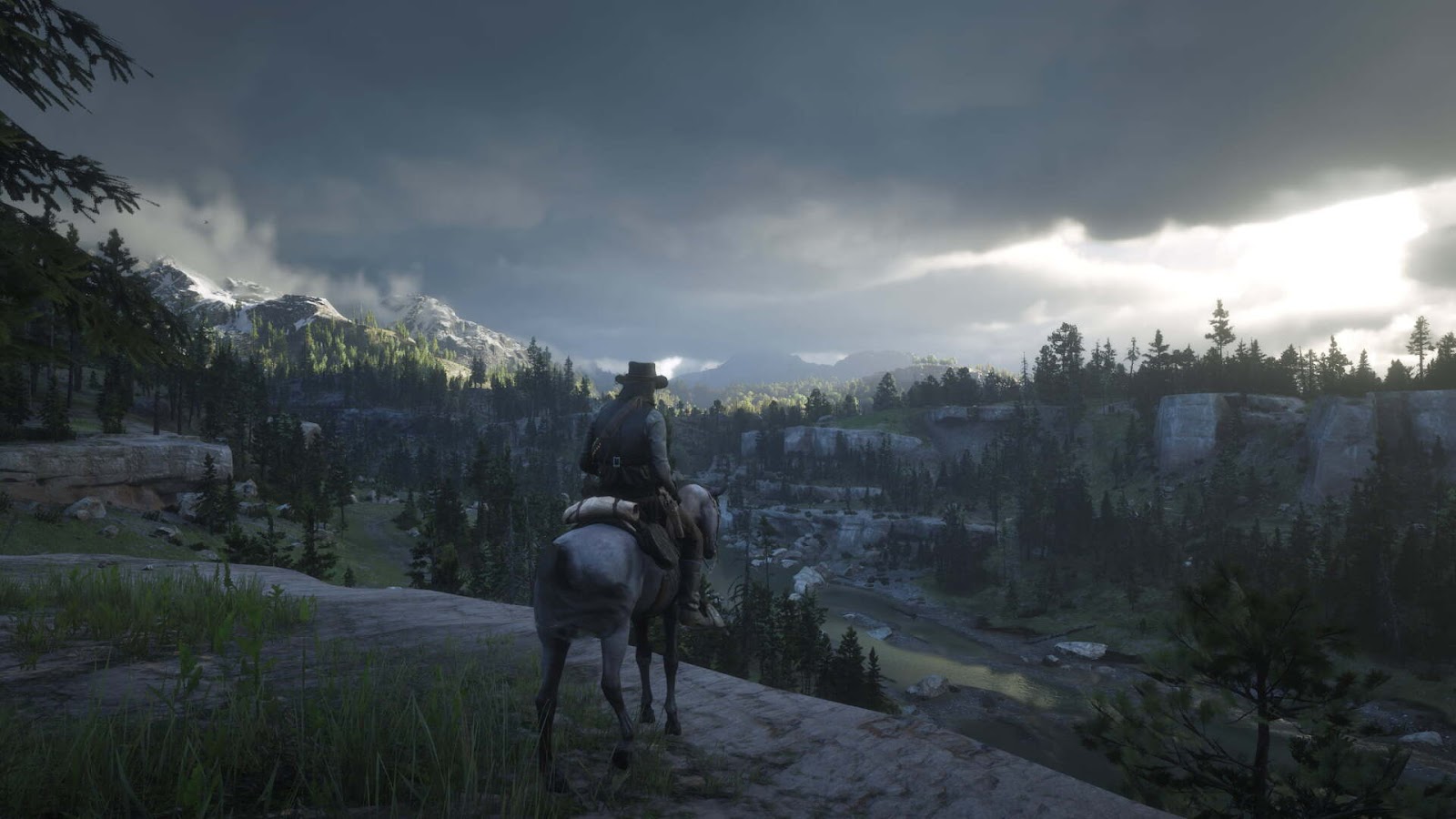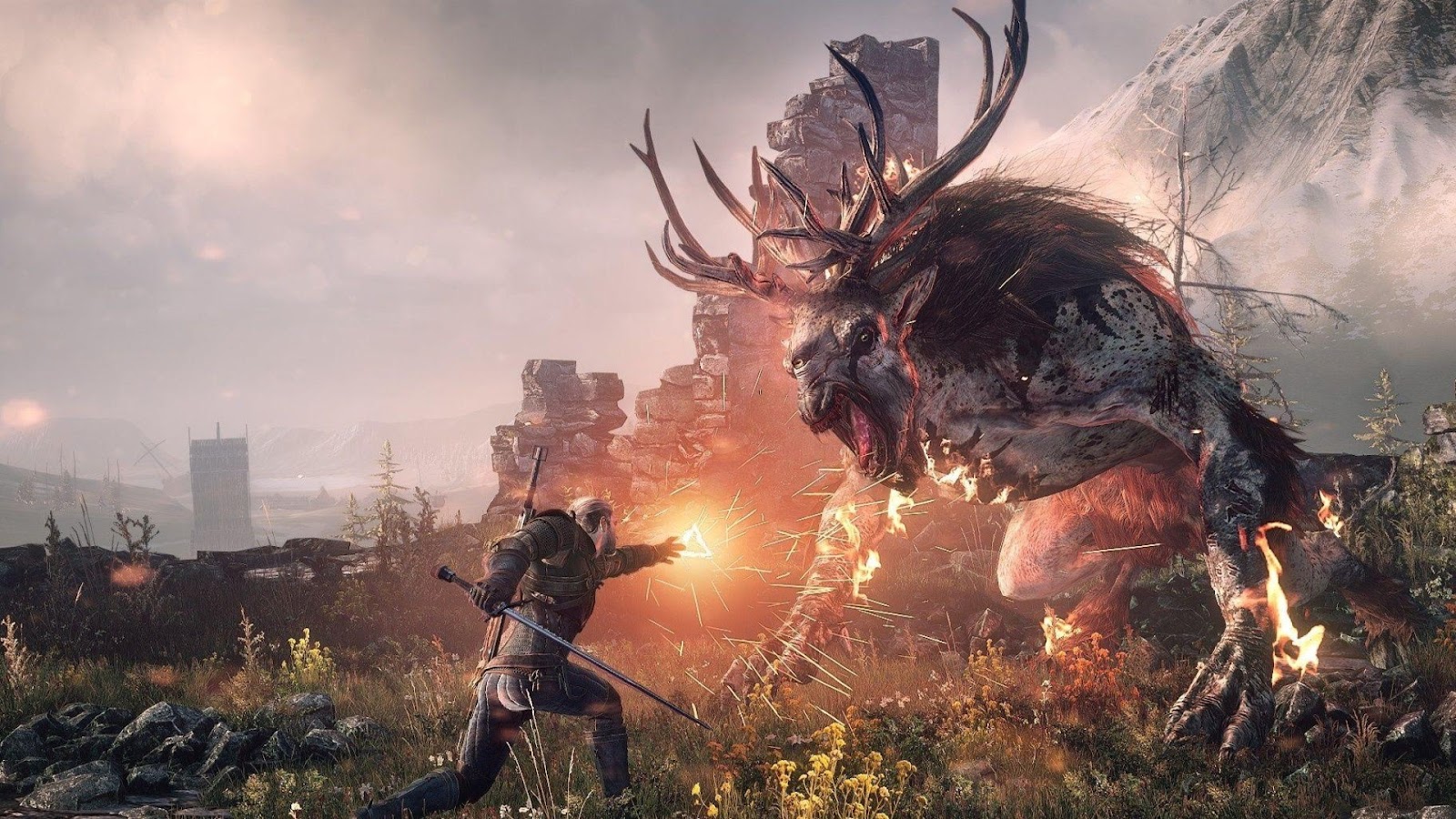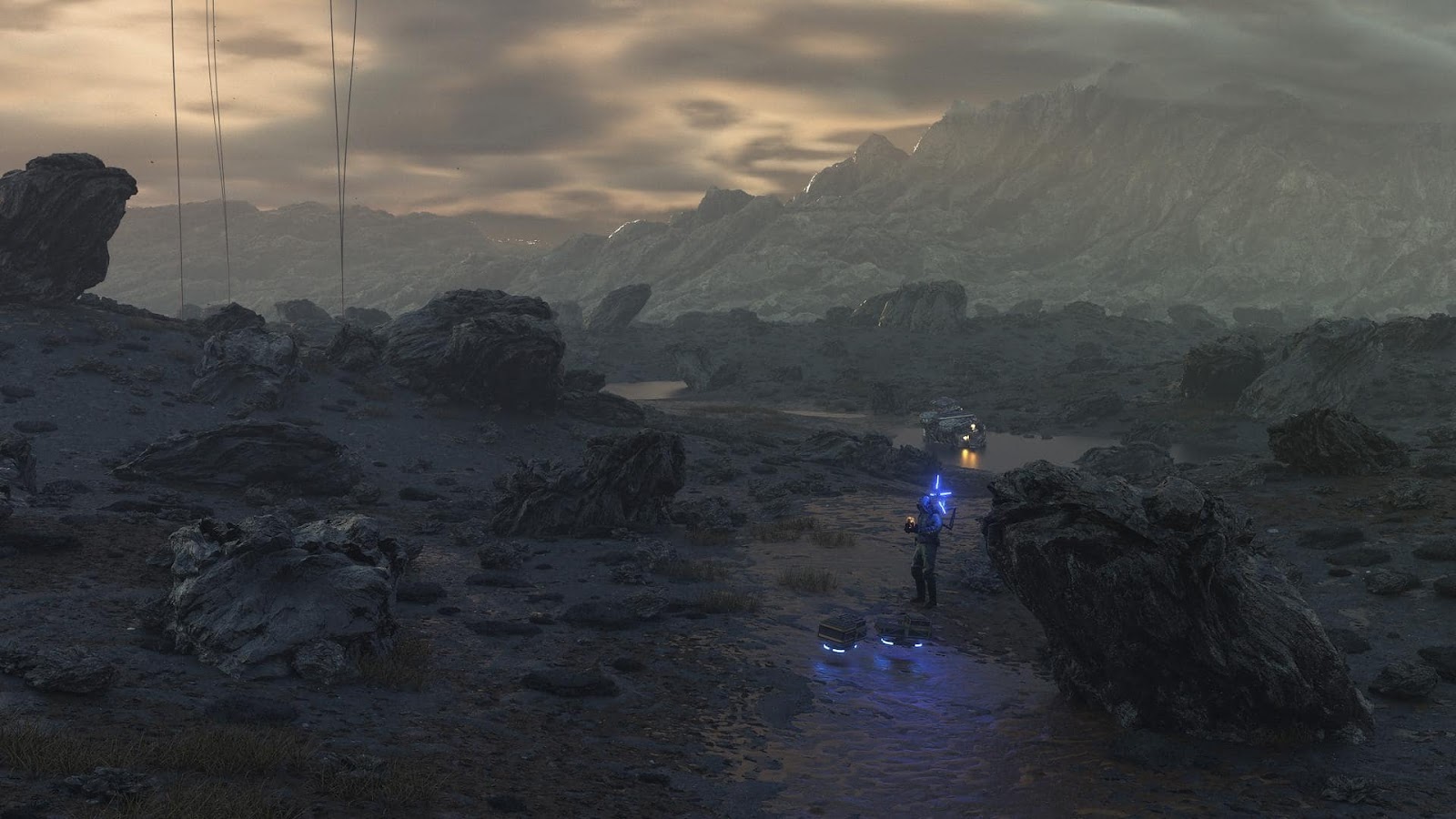
To truly enjoy a game, it’s essential to become fully engrossed in its environment. This immersion is crucial at both broad and minute levels. For instance, in expansive worlds, the setting must feel authentic – a cyberpunk game needs hover cars, while a western tale requires a band of outlaws for a genuine experience. On a smaller scale, even the minutiae such as footprints or hair physics contribute to this immersion, making the world seem more real and engaging.
To put it simply, life-altering games usually feature realistic open environments. These open environments include non-player characters (NPCs) who interact with you in an unscripted and authentic manner. The layout of the maps aligns with the game’s storyline, while random world events keep you hooked to the on-screen action. Fortunately, there are numerous games offering such experiences. Thus, here are some top picks featuring the most realistic open worlds that you shouldn’t miss out on.
1) Cyberpunk 2077

In Cyberpunk 2077, the moniker truly resonates. Its expansive environment and inhabitants embody the style. The city is bathed in vibrant neon illumination, with flying vehicles overhead, neon-lit advertisements adorning every structure, and holograms illuminating intersections. The denizens of Night City are heavily augmented; they sport artificial limbs and unconventional enhancements. Each Non-Player Character you meet seems to tell a tale just by their appearance, hinting at the rich backstory hidden beneath.
As I dive into the gritty, neon-lit streets of Night City in Cyberpunk 2077, it’s not just the stunning visuals that capture my attention. The gameplay consistency is what truly sets this world apart. From the back alleys to the towering skyscrapers, everything and everyone is hackable, adding a layer of immersion that I haven’t experienced before in an open-world game.
The diverse population is evident in the different languages spoken by NPCs, each district teeming with unique characters. The intricate world design allows for multiple explorable floors within buildings, showcasing the vast scale of this urban jungle.
Rival gangs can be seen squabbling in the districts, adding a sense of realism and tension that makes the city feel alive. It’s a place where technology, crime, and humanity intertwine in a way that feels both futuristic and grounded. Once you step into Night City, it’s hard not to get lost in its gritty allure. It’s a world I find myself eager to explore further, one that has left an indelible mark on me.
2) Metal Gear Solid 5: Phantom Pain

In the expansive universe of Metal Gear Solid 5, things don’t just pop up randomly. If you’re tracking an NPC (Non-Player Character), you’ll initially have to discover their whereabouts first. However, during a replay, you can quickly locate the NPC since you already know their location from your previous experience. Additionally, these characters stick to a routine in this game world – they rest, patrol areas, and if they spot you, they strategically attempt to surround you.
In the expansive realm of Metal Gear Solid V, I’ve found myself immersed in a world brimming with dynamic elements. Sandstorms and dense fogs blur my vision, adding an extra layer of challenge to navigation. Enemy bases are intricately designed, complete with communication towers, street lights, and vital structures like power generators – all potential targets for disruption.
Wild animals roam freely, often turning the tables on my adversaries in unexpected ways. The gunplay is remarkably realistic, with factors such as recoil, reloading speed, and aiming requiring a keen eye and steady hand.
Missions offer a degree of flexibility, allowing me to devise my own strategies rather than strictly following markers. I can outsmart the system, reach objectives independently, and even bypass substantial parts of missions if I so choose. In essence, Metal Gear Solid V’s world is more than just a scenic backdrop; it’s a versatile tool that breathes life into the gameplay experience, making each adventure feel uniquely my own.
3) Assassin’s Creed: Shadows

Despite having several areas for improvement, the Assassin’s Creed game series consistently excels in one key area: the immersive settings. From Italy to America, Ancient Greece, London, and most recently, feudal Japan in “Assassin’s Creed Shadows”, these games skillfully capture the essence and architectural beauty of each location, offering players a captivating journey through history. The trip back to feudal Japan was particularly enjoyable!
In “Assassin’s Creed: Shadows,” shadows mirror the traditional Japanese artistic style. The architecture is authentically historical, characters wear clothes from that period, and samurai guard the open-world borders. To your right lies picturesque countryside, rivers flow to your left, and mountains stand straight ahead. This open world also features a weather transformation system where all seasons pass naturally, altering the map’s appearance. NPCs respond realistically to the weather, seeking shelter from rain or other elements. Some players might find the narrative storytelling less captivating in this game, but they will surely be amazed by the breathtaking portrayal of Japan.
4) Ghost of Tsushima

Similar to “Assassin’s Creed Shadows,” Ghost of Tsushima is also set in medieval Japan. Yet, while Ghost of Tsushima garners recognition for its breathtaking graphics, the praise it deserves for its expansive and vibrant open world often goes unnoticed. The game’s world teems with life, intriguing side missions, and awe-inspiring vistas that no other title has managed to replicate so far.
As a gamer, I find myself immersed in the breathtaking landscapes of Tsushima, nestled off the coast of mainland Japan. The scenery is a vibrant tapestry of red and white fields, lifelike swamps, towering green grass that offers perfect camouflage, and awe-inspiring spots where my character, Jin, composes Haikus. However, this idyllic setting is marred by the oppressive Mongolian invasion, with enemy outposts and patrols lurking around every corner. The local populace, sadly, are often seen struggling against their invaders.
In Ghost of Tsushima, you embark on adventures delving into folklore, seek out ancient armor sets, engage in battles with skilled swordfighters, and sneak into fortresses undetected. Along your journey, you may encounter random creatures like foxes or birds; following them can lead to hidden quests and shrines. The game’s weather changes dynamically, and the wind direction helps guide you towards your current objective. These small details create a remarkably realistic open world that keeps you engrossed for extended periods without realizing it.
5) Red Dead Redemption 2

In the game “Red Dead Redemption 2”, if you skin a deer and leave its hide for 24 hours, it will show signs of being eaten by predators. Wait another 24 hours, and the hide will have decayed completely, demonstrating the game’s impressive attention to detail in creating a realistic open world.
Rockstar has brought unprecedented realism to the world of Red Dead Redemption 2. As you navigate Arthur through the snow, it leaves a distinct trail behind him. Submerging yourself in the water will cause your clothes to become damp, and they’ll take their sweet time drying off. The map is brimming with numerous small towns. These bustling settlements are teeming with hundreds of memorable NPCs who add depth to the game’s universe. In one corner of a city, you might encounter a blind beggar who flinches at the sight of a drawn weapon. Elsewhere, bandits may be wreaking havoc in the neighborhood. The intricacy of detail in Red Dead Redemption 2 is nothing short of mind-blowing. There’s no sense of artificiality; instead, you find yourself often questioning whether what you’re experiencing is real or not.
6) The Witcher 3: Wild Hunt

As you traverse the vast landscape in “The Witcher 3”, you’ll find interactions occurring organically rather than being scripted. Occasionally, you might come across a merchant under attack by wolves, or witness a mini-story unfolding between two NPCs. These characters will reference experiences you’ve had and destinations you’re about to visit. They engage in everyday activities like eating, resting, chatting about current events, and maintaining routines.
In the game “The Witcher 3”, the day-night cycle is quite realistic, with certain monsters only emerging under the cover of night. Each area on the map has been meticulously crafted to prevent visual monotony. The quests are designed in such a way that they contribute to the storyline. For instance, rescuing an NPC might lead to encountering them again in another mission. These intricate details make the world feel lived-in and authentic. In essence, “The Witcher 3’s” map epitomizes what it means for a virtual open world to be lifelike at its best.
7) Death Stranding

Including “
What gives Death Stranding‘s desolate world a sense of reality is that it successfully achieves its intended purpose. The world is overrun by supernatural entities and thieving bandits, making for constant hazards. These dangers can be found lurking in every corner of the landscape. Massive mountains, rockslides, unfinished roads, and dilapidated buildings are common sights. Although the world appears barren, it is intentionally designed to depict an apocalypse. This design aims to evoke feelings such as loneliness, hope, and anticipation in players about what new experiences they’ll have during Sam’s travels.
Exploring the entirety of Death Stranding is like taking a lengthy, scenic stroll through a post-apocalyptic environment. However, it may not appeal to everyone. But if you’re someone who enjoys unique and tranquil settings, then you will find the open world of Death Stranding quite appealing.
Read More
- When Perturbation Fails: Taming Light in Complex Cavities
- Jujutsu Kaisen Execution Delivers High-Stakes Action and the Most Shocking Twist of the Series (Review)
- Fluid Dynamics and the Promise of Quantum Computation
- Where Winds Meet: Best Weapon Combinations
- FC 26 reveals free preview mode and 10 classic squads
- Hazbin Hotel season 3 release date speculation and latest news
- 3 PS Plus Extra, Premium Games for December 2025 Leaked Early
- 7 Most Overpowered Characters in Fighting Games, Ranked
- Why Carrie Fisher’s Daughter Billie Lourd Will Always Talk About Grief
- TikToker Madeleine White Marries Andrew Fedyk: See Her Wedding Dress
2025-06-26 00:13